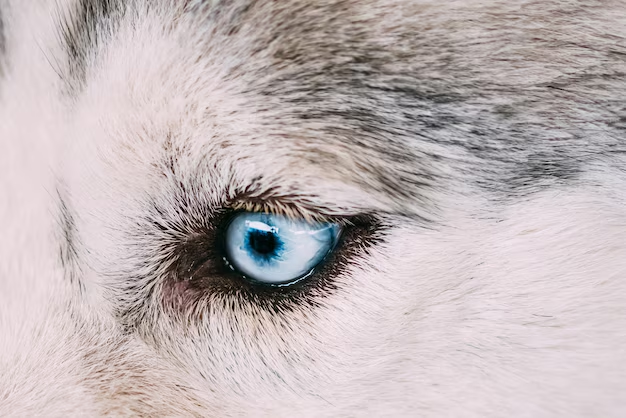Recognizing Cataracts in Dogs: What You Need to Know
If your dog seems to be bumping into furniture more often or is tentatively navigating spaces that were once familiar, it might not just be a sign of aging. Your furry friend's eyes could be undergoing changes indicative of cataracts, a condition that affects many dogs as they get older. Understanding what cataracts look like in dogs can help you provide better care and take appropriate action to maintain their quality of life.
Understanding Canine Cataracts
Cataracts are not dissimilar whether they are present in humans or dogs. Essentially, cataracts are clouding of the lens in the eye, leading to diminished vision and, if not treated, potential blindness. But what causes cataracts in dogs, and how can you spot them?
What Causes Cataracts in Dogs?
There are several reasons why a dog might develop cataracts:
- Genetics: Many dog breeds are predisposed to developing cataracts. Breeds like the Cocker Spaniel, Poodle, and Siberian Husky are often cited.
- Diabetes: Dogs with diabetes mellitus are at higher risk due to blood sugar imbalances affecting the eye lens.
- Aging: As with humans, cataracts in dogs can be a natural part of the aging process.
- Eye Trauma or Disease: Injury or other eye conditions can precipitate cataract formation.
What Do Cataracts Look Like in a Dog?
Observing your dog's eyes closely can help in identifying cataracts. Here’s what to look for:
Signs of Cataracts
Cloudy Appearance: The most noticeable symptom is a smoky or bluish-white appearance of the lens. This cloudiness can start small but often progresses, covering the pupil like an opaque film.
Behavioral Changes: Dogs may hesitate in new environments, bump into objects, or have difficulty retrieving toys.
Vision Problems: While not visually observable to the naked eye, vision issues manifest as strategic movements, especially in dim lighting.
Inflamed Areas Around the Eye: Although not a direct result of cataracts, inflammation may accompany underlying issues causing the lens change, warranting further investigation.
Differentiating Cataracts from Other Eye Conditions
Not all cloudiness in the eye is due to cataracts:
Nuclear Sclerosis: Often confused with cataracts, this age-related change also causes a cloudy eye appearance, but usually does not impair vision significantly.
Glaucoma: Increased eye pressure can also lead to cloudy eyes but often causes pain and redness, unlike cataracts.
Recognizing these differences is crucial in seeking appropriate veterinary care.
Diagnosing Cataracts in Dogs
Once you suspect cataracts, a visit to the vet is essential. Here's what you can expect in a diagnostic process:
Veterinary Examination
- Initial Visual Inspection: The vet will perform a physical eye examination looking for the obvious signs of cataracts.
- Ophthalmoscopic Exam: This more detailed inspection allows the vet to examine the lens closely.
- Additional Tests: In some cases, tests like ultrasounds or a Schirmer Tear Test may be conducted to evaluate the eye's overall health and functionality.
Treatment Options and Management
While detecting cataracts can be distressing, there are ways to manage and treat this condition to help your dog maintain a good quality of life.
Surgical Intervention
For many dogs, surgery may be recommended to remove the cataracts:
- Phacoemulsification: This is the most common procedure, where an ultrasonic device breaks up and removes the cloudy lens, often replaced by a clear artificial lens.
The success rate for cataract surgery in dogs is generally favorable, though postoperative care requires commitment.
Non-Surgical Management
In cases where surgery may not be viable, other supportive management strategies include:
- Medication: While there aren’t medications to "cure" cataracts, medications may help manage secondary complications or delays in progression.
- Regular Monitoring: Veterinary check-ups ensure any changes are tracked, and complications such as increased intraocular pressure are managed.
Lifestyle Adjustments
To help your dog cope with cataracts, consider these practical lifestyle adjustments:
- Home Adjustments: Keep furniture and familiar objects in consistent positions to aid navigation.
- Safety Measures: Use gates around dangerous areas such as stairs to prevent accidents.
- Training and Commands: Use vocal cues and commands to guide your dog around obstacles and during activities.
Proactive Measures and Prevention
Breeding Considerations
For breeds prone to hereditary cataracts, genetic testing and responsible breeding practices can minimize prevalence over time.
Regular Vet Visits
Routine eye examinations, especially in predisposed breeds, can catch early signs and manage conditions that might contribute to cataract formation.
Diet and Health Management
Nutritional supplements and maintaining optimal health, including energy expenditure and weight control, can play a role in mitigating some cataract risks.
Key Takeaways: 🐶👁️
- Recognize the Signs: Identifying hallmark signs like cloudiness and behavioral changes help in early intervention.
- Seek Professional Diagnosis: A vet's examination can differentiate cataracts from other eye conditions.
- Explore Treatment Options: Surgery is effective but requires proper postoperative care; non-surgical options focus on managing symptoms.
- Adapt Living Spaces: Ensuring a safe home environment and leveraging training methods can aid your dog’s daily life.
By understanding what cataracts look like in dogs and the steps for management, you can better support your furry companion through their visual changes. Addressing cataracts with informed care helps ensure your pet continues to enjoy their world with you safely and comfortably.
